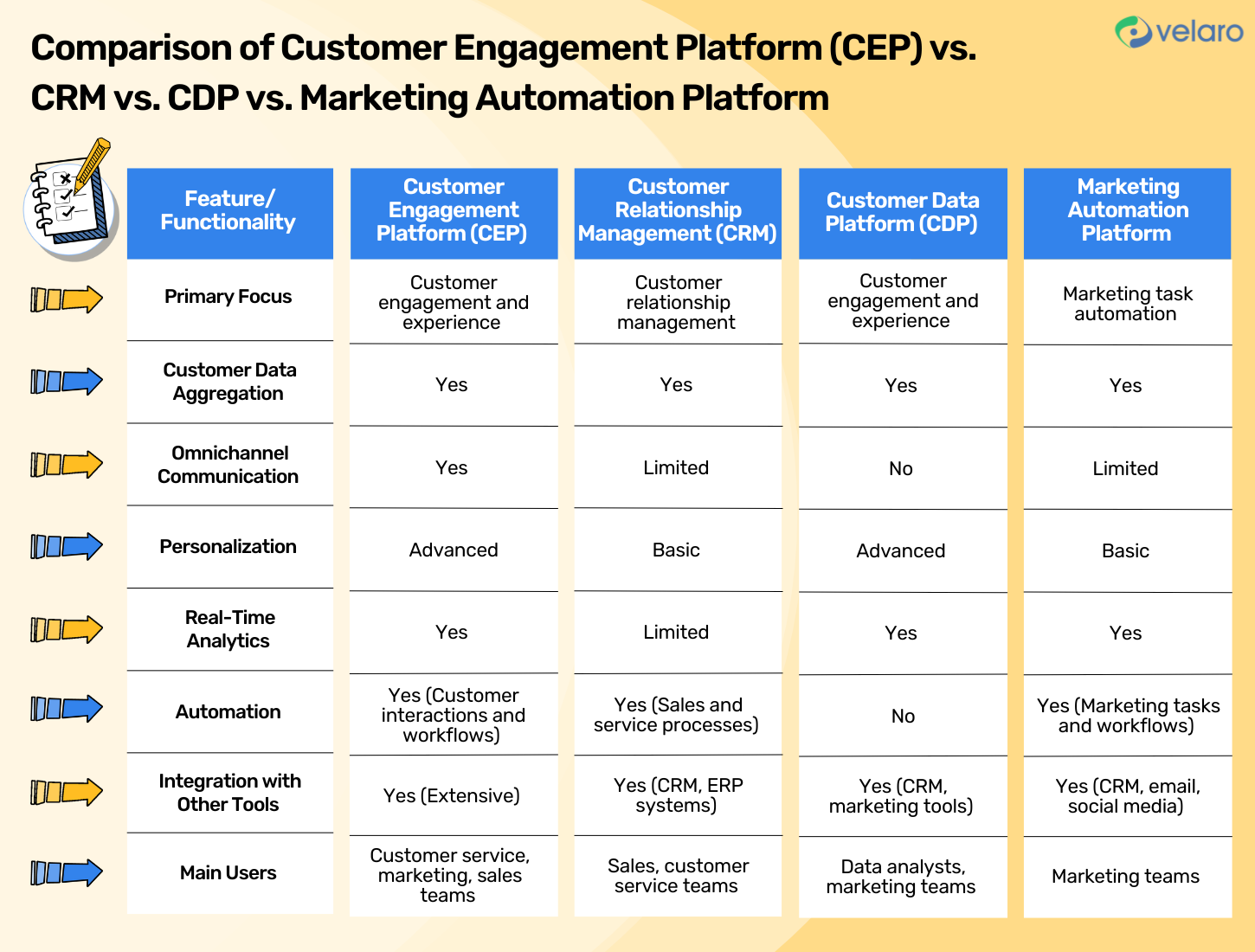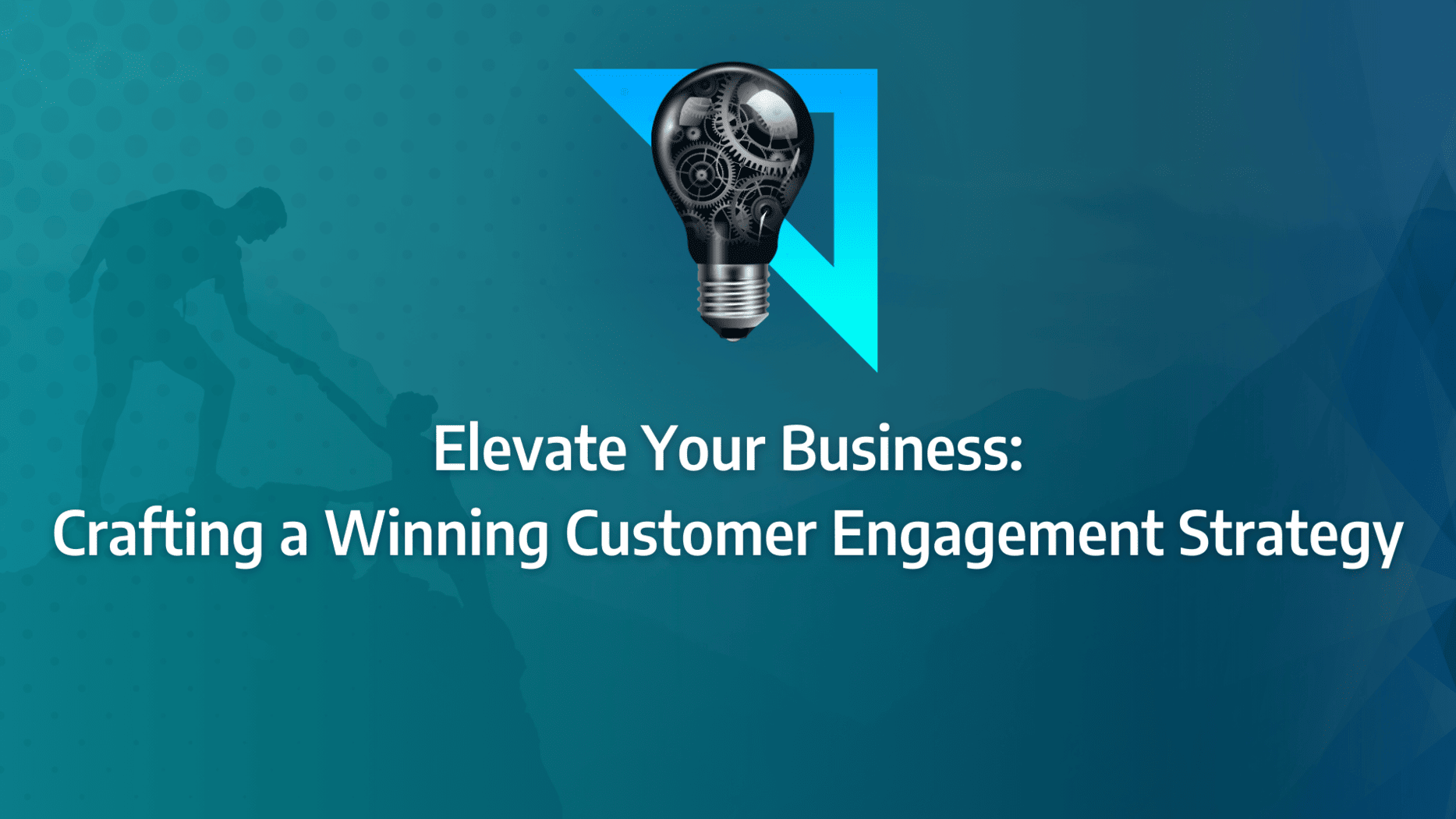Maintaining meaningful engagement can feel like an uphill battle. How can you ensure your business is consistently connecting with your audience across every touchpoint? The answer lies in crafting a customer engagement strategy that not only aligns with your goals but also resonates with your audience.
This guide will walk you through a step-by-step approach to designing an engagement strategy that leverages personalisation, CRM tools, and data analytics. From mapping your customer journey to optimising your content formats for engagement, we’ll explore how you can build stronger, lasting relationships with your customers.
- Map the Customer Journey: Start by identifying the key stages of your customer lifecycle. Ensure each stage is supported with optimised content that meets customer needs and moves them closer to conversion.
- Leverage CRM Tools: Use CRM systems to track customer interactions and personalise engagement efforts. Integrating CRM with your content strategy helps create seamless customer experiences and improves engagement efficiency.
- Implement Personalised Content: Tailor your communication and content strategies to individual customer preferences. Personalisation increases relevance, fostering better customer loyalty and satisfaction.
- Use Data Analytics for Better Engagement: Monitor customer behaviour and engagement metrics. Leverage this data to adjust your strategy, ensuring you’re consistently delivering the right content at the right time.
- Diversify Content Formats: Engage your audience with a variety of content formats like videos, whitepapers, and blogs. Each format has unique strengths in capturing attention and driving engagement.
- Optimise Content for Search Engines: Ensure your content is discoverable by optimising for SEO. A well-executed SEO strategy enhances engagement by increasing visibility and driving traffic to your content.
- Focus on Value-Driven Content: Keep your content focused on addressing customer pain points and offering actionable solutions. Valuable, relevant content is key to retaining customer interest.
- Incorporate Video Marketing: Video content drives higher engagement and retention. Use it strategically to convey complex information in a digestible format, improving customer experience.
- Craft Effective Whitepapers and Ebooks: Use long-form content, like whitepapers and ebooks, to offer in-depth insights and solutions. These assets are particularly valuable for lead generation and nurturing high-value prospects.
What is Customer Engagement?
At its core, customer engagement is about fostering meaningful interactions between your brand and its customers. These interactions can occur across various channels, and each touchpoint plays a critical role in strengthening the relationship. Whether it’s on social media, your website, through email marketing, or other platforms, each engagement contributes to building a deeper connection.
Crucially, customer engagement is not limited to the point of purchase. It begins from the moment a customer first interacts with your brand and continues well beyond the initial transaction. Every subsequent interaction, whether it’s consuming content, following your brand on social platforms, or engaging with email campaigns, signals a level of ongoing involvement. This continuous connection forms the foundation of a robust customer engagement strategy.
To enhance these relationships, it’s essential to deliver consistent, cross-channel experiences. Offering your customers the flexibility to choose how and where they engage with your brand can significantly increase their sense of value. When customers are able to connect with content and experiences that resonate with them, they are more likely to develop a stronger emotional bond with your brand, which is pivotal for creating a solid customer engagement framework.
Ultimately, by focusing on content and experiences that deliver value, your brand can foster meaningful, long-term connections. Customers who feel they are receiving more than just a product or service are more likely to remain loyal, advocate for your brand, and engage on a deeper level.
Why is Customer Engagement Important?
In a marketplace driven by acquisition metrics like clicks and conversions, it’s easy to overlook the importance of engagement that happens in between and beyond those transactions. However, successful customer engagement has the power to strengthen emotional ties, encouraging customers to stay loyal. A well-executed customer engagement strategy ensures that your brand remains top-of-mind when customers make decisions, driving not only retention but also repeat purchases and increased responsiveness to your marketing efforts.
Customer engagement goes far beyond moving customers through the marketing funnel. It’s about creating connections at every stage of the customer journey, not just at key moments like conversion. As your customer engagement roadmap evolves, so too will your ability to cultivate stronger relationships that translate into higher cross-sell and up-sell opportunities, increased average order value, and long-term business growth.
Source: Gallup
The Benefits of Customer Engagement
Investing in customer engagement offers a myriad of benefits that can significantly impact your brand’s performance. Prioritising engagement as part of your overall user engagement strategy helps drive growth, enhance brand loyalty, and improve customer satisfaction. Below are some of the key benefits:
- Higher Customer Retention and Loyalty
Engaged customers are more likely to stay with your brand for an extended period, reducing churn and increasing the lifetime value of each customer. These loyal customers also tend to advocate for your brand, referring products to friends and family and serving as organic brand ambassadors. - Improved Customer Satisfaction
When customers feel valued and appreciated, their satisfaction naturally increases. Building a personal connection through regular engagement boosts trust and promotes a positive image of your brand. This heightened satisfaction positions your business as a preferred choice over competitors. - Enhanced Brand Reputation and Market Presence
Engaging customers through social media and other channels not only improves their experience but also amplifies your brand’s presence. Positive interactions are often shared, whether through word-of-mouth or on digital platforms, helping to expand your brand’s reach and attract new potential customers. - Greater Competitive Advantage
In today’s competitive landscape, a strong customer engagement strategy gives your brand a distinct edge. Brands that deliver exceptional customer experiences, nurture emotional connections, and consistently exceed expectations are better positioned to outperform competitors. This advantage drives growth, bolsters customer loyalty, and opens doors to new opportunities.
By embedding customer engagement into your long-term strategy, you can ensure that your brand isn’t just meeting customer expectations but exceeding them, thereby driving deeper connections that will enhance customer engagement and fuel sustained growth.
What Matters Most?
Prioritising a deep understanding of the customer journey is essential for tailoring interactions that truly resonate and drive engagement. Clients often discover that creating meaningful content addressing their customers’ needs fosters stronger connections. Additionally, building strong customer relationships through personalised communication strategies typically enhances loyalty and trust, positioning brands for long-term success.Get In Touch
What are the best metrics for measuring customer engagement?
Measuring customer engagement can vary depending on your business type and the channels your customers use to interact with your brand. A well-structured customer engagement framework helps ensure that all aspects of interaction are accounted for. Below are some of the most effective ways to measure engagement:
- Website Traffic: Metrics like page views, bounce rate, and time spent on site provide insight into how customers engage with your website. Tracking these metrics helps you understand how many people are visiting, how long they’re staying, and which content resonates most with them.
- Social Media Engagement: Monitoring likes, shares, comments, and followers on platforms such as LinkedIn, Twitter, or Facebook can reveal how well your content is performing and how customers are interacting with your brand on social channels.
- Email Engagement: Metrics like open rate, click-through rate, and unsubscribe rate are essential for assessing the effectiveness of your email marketing campaigns. These indicators offer insight into how well your emails are engaging customers and what content drives the best results.
- Repeat Purchases: Tracking how often customers return to make additional purchases is a clear indicator of successful engagement. Repeat purchasing behaviour often reflects a positive ongoing relationship between your brand and the customer, making it a vital part of your customer engagement strategy.
- Online Reviews: Monitoring and analysing customer reviews on platforms like G2, Google, and Capterra can offer critical insights into customer sentiment. This method helps track patterns in feedback, providing a clearer picture of your customer engagement roadmap.
What is Customer Experience?
Customer experience is a broader concept, encompassing every interaction a customer has with your brand. While customer engagement focuses on the depth of interactions, customer experience is about the overall perception of your brand, influenced by every touchpoint—whether it’s the quality of your product, the effectiveness of your customer service, or how seamlessly your website operates.
A superior customer experience can make a measurable impact: 86% of customers are willing to pay more for better experiences, with some even willing to pay up to 16% more after a particularly positive interaction. These figures highlight the critical importance of building a strong user engagement strategy that goes beyond basic engagement and focuses on delivering exceptional experiences at every stage of the customer journey.
How to Measure Customer Experience
Measuring customer experience can be complex, given its multifaceted nature. However, by focusing on key metrics, businesses can gain a better understanding of how customers perceive their brand:
- Surveys: Surveys remain one of the most reliable methods for gathering feedback on customer experience. You can ask customers for insights on various aspects such as product quality, service efficiency, and overall satisfaction.
- Net Promoter Score (NPS): NPS measures customer loyalty and willingness to recommend your brand. A simple question asking how likely customers are to recommend you on a scale of 0-10 can offer invaluable insights. Customers who rate you 9 or 10 are considered promoters, while lower scores indicate areas for improvement.
- Customer Effort Score (CES): CES measures how easy or difficult it is for customers to interact with your brand. A high CES suggests that you are effectively removing friction from the customer journey, enhancing their overall experience.
- Customer Retention Rate: This metric evaluates the number of customers who remain with your brand over time. A higher retention rate is a strong indicator of positive customer experiences and the effectiveness of your customer engagement roadmap.
- Voice of the Customer (VoC) Programmes: These structured programmes enable businesses to systematically gather and analyse customer feedback to inform actionable changes.
- A/B Testing: Testing different variations of your products or services and analysing customer responses allows you to identify which changes result in better customer experiences. It’s an effective way to optimise every touchpoint and ensure that you’re delivering what customers value most.
What is the difference in customer interaction and engagement?
While customer engagement refers to the level of interaction and involvement customers have with your brand, customer experience encapsulates the overall perception customers hold based on all of their interactions. Engagement is about how deeply customers are involved with your brand, whereas experience reflects their emotional connection and satisfaction with your offerings.
To measure customer engagement, you track metrics like website traffic, social media engagement, email responses, and purchase behaviour. These metrics offer insight into how effectively your customer engagement strategy is being implemented and highlight areas for improvement.
On the other hand, customer experience takes a more holistic view, encompassing metrics like customer satisfaction, NPS, CES, and retention rates. Together, these two elements—engagement and experience—provide a comprehensive understanding of how customers perceive and interact with your brand, making them essential components of any user engagement strategy.
Source: Gallup
Techniques and Tactics for Optimising Customer Engagement
1. Use a Chatbot
Chatbots, powered by artificial intelligence (AI), are increasingly being deployed to enhance customer engagement by offering real-time support to users and website visitors. These AI-driven tools are designed to greet users as soon as they land on specific pages of your website, such as landing pages or product service areas. Advanced chatbots are capable of engaging in basic conversation, answering moderately complex queries, and even making personalised product recommendations to returning customers.
To fully integrate chatbots into your customer engagement strategy, it’s essential to set up appropriate triggers so that the bot can step in at the exact moment support is needed. This ensures that customers experience minimal friction during their journey, allowing the chatbot to resolve simpler issues efficiently and escalate more complex problems to human agents when necessary.
Incorporating chatbots effectively can drastically streamline the support process and improve the overall user engagement strategy. They are particularly useful outside of normal business hours, providing 24/7 assistance and reducing frustration for customers who encounter product or service issues. This creates a smoother journey and ensures your brand is accessible whenever your customers need help.
However, to truly maximise the benefits of chatbots within your customer engagement framework, it’s crucial to balance automation with human interaction. Your team should step in when necessary, following up on the initial information collected by the chatbot and resolving more complicated issues. Combining human empathy with AI efficiency is the key to optimising both engagement and satisfaction.
2. Conversational Marketing
Conversational marketing is about shifting the focus from transactional interactions to more personal, meaningful conversations with your customers. Rather than immediately addressing purchase inquiries or handling support tickets in a mechanical way, this approach prioritises relationship-building by fostering a more relaxed and interactive dialogue.
This shift from traditional business interactions to a more informal, conversational tone can alleviate friction along the customer journey, reducing feelings of frustration and enhancing the overall customer experience. Through these more personable exchanges, your team will also gain deeper insights into customer preferences, enabling them to deliver tailored support and improve service levels.
Moreover, conversational marketing plays a crucial role in developing lasting relationships that benefit both your brand and your customers. It is a strategy that works across multiple touchpoints, ensuring that every interaction contributes to stronger connections.
To implement conversational marketing successfully as part of your customer engagement strategy, it’s essential to track the history of interactions across channels. By having access to past conversations, your team can provide a seamless, informed response, ensuring the customer doesn’t have to repeat themselves. This streamlines support and leads to a more satisfying experience.
3. Active Listening
Active listening is a critical tactic within any customer engagement strategy. It involves carefully monitoring what your customers are saying across various channels, from social media to third-party review platforms. By paying close attention to their feedback, you gain valuable insights into their perceptions of your brand and the overall customer experience.
To facilitate active listening, make it easy for customers to provide feedback through your website. This could be through a feedback form, survey, or review request. It is equally important to ensure that your team responds promptly to this feedback, especially when it’s negative. Quick, thoughtful responses show your customers that you value their input and are committed to improving their experience.
Incorporating active listening into your customer engagement roadmap can help you identify whether customers are comparing your brand to competitors, sharing their experiences with customer support, or providing positive feedback about your products. These insights allow you to make informed adjustments to your user engagement strategy and refine your customer engagement framework for better results.
To get the most out of active listening, you need a system that tracks what your customers are saying across multiple platforms. This includes monitoring social media, online reviews, and direct feedback on your website. Once you’ve gathered this information, it’s vital to respond appropriately—addressing concerns, acknowledging praise, and taking actionable steps to improve wherever possible. This level of attentiveness fosters trust and helps enhance customer engagement across all channels.
Our Tactical Recommendations
Implementing feedback loops is crucial for gaining insights into customer satisfaction, enabling continuous improvement in engagement strategies. We often find that training client teams to view every interaction as an opportunity to enhance customer loyalty significantly impacts overall satisfaction.Get In Touch
What are some good customer engagement platforms?
Selecting the right platform is key to building an effective customer engagement strategy. With the right tools in place, you can streamline customer interactions, improve satisfaction, and ultimately enhance customer engagement across all touchpoints.

Below are some of the best platforms available for managing and optimising engagement.
1. Salesforce Service Cloud
Salesforce Service Cloud provides a robust suite of tools designed to manage customer interactions, streamline workflows, and improve customer satisfaction. It’s an all-encompassing solution that integrates seamlessly with Salesforce and various third-party applications, making it a staple in many customer engagement frameworks.
Key features:
- Omni-channel routing: Directs customer inquiries to the most appropriate agents, ensuring quick and efficient responses.
- Einstein AI: Utilises predictive analytics and automation to help forecast customer needs and streamline workflows.
- Centralised repository: Allows for quick access to information, making it easier to resolve customer issues effectively.
- Advanced reporting: Provides detailed reports on customer interactions, enabling businesses to monitor satisfaction and performance.
- Seamless integration: Works fluidly with Salesforce and other third-party apps to consolidate customer data and interactions.
- Mobile access: A fully functional mobile app ensures your team can manage customer queries anytime, anywhere.
2. Zendesk
Zendesk excels in providing businesses with tools for customer service, engagement, and support. Its strength lies in integrating communication channels into a single platform, simplifying the management of customer interactions and support processes. By enabling more streamlined workflows, Zendesk helps brands deliver better experiences, making it an integral part of a user engagement strategy.
Key features:
- Ticketing system: Efficiently tracks, prioritises, and resolves customer support requests.
- AI bots and automation: Automates simple tasks, routes tickets intelligently, and provides instant responses to routine queries.
- Customisable workflows: Tailors processes to meet the specific needs of businesses across different sectors.
- Collaboration tools: Shared inboxes and internal notes foster collaboration among agents, ensuring a consistent customer experience.
3. Pipedrive
Pipedrive focuses on sales pipeline management and is known for its visual, intuitive interface that simplifies deal tracking, contact management, and sales automation. As part of a customer engagement roadmap, Pipedrive helps sales teams remain organised and responsive, enhancing their ability to build stronger relationships with prospects and customers alike.
Key features:
- Customisable dashboards: Display relevant data and key performance indicators (KPIs) for users or teams, offering full transparency into the sales pipeline.
- Activity tracking: Tracks and schedules calls, meetings, and other interactions to ensure that sales processes remain on track.
- Sales pipeline management: Visually manage deals as they move through different stages of the sales cycle, helping teams stay organised and focused.
4. Klaviyo
Klaviyo is a powerful platform that combines automation capabilities with robust analytics to help businesses create personalised and effective email marketing campaigns. This platform’s focus on customer data and behaviour makes it an essential tool for businesses looking to enhance customer engagement through targeted messaging and lifecycle marketing.
Key features:
- Centralised customer data: Collates customer behaviour data to create comprehensive profiles, enabling businesses to understand how customers interact across various touchpoints.
- Advanced automation: Sends tailored emails based on customer behaviours, lifecycle stages, and purchase history, ensuring timely and relevant communication.
- Customer segmentation: Segments customers based on their engagement metrics, purchasing behaviour, and browsing activity to deliver highly personalised messaging.







